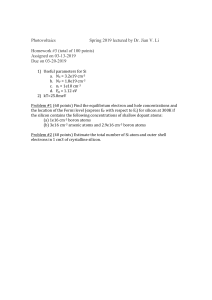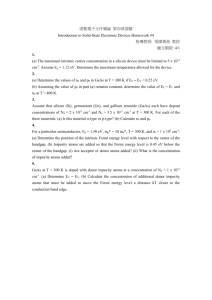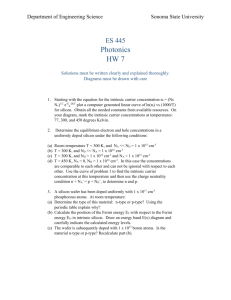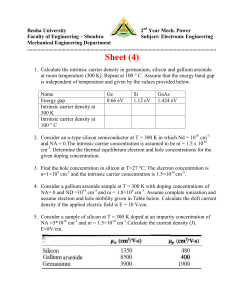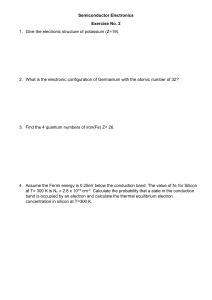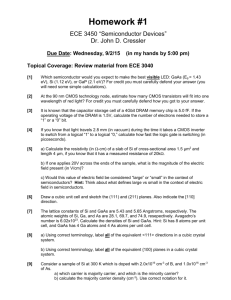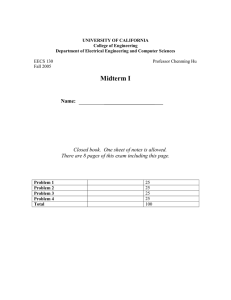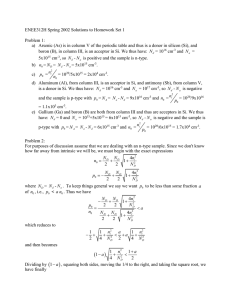2002 Homework 1 due Thursday, February 7, 2002
advertisement
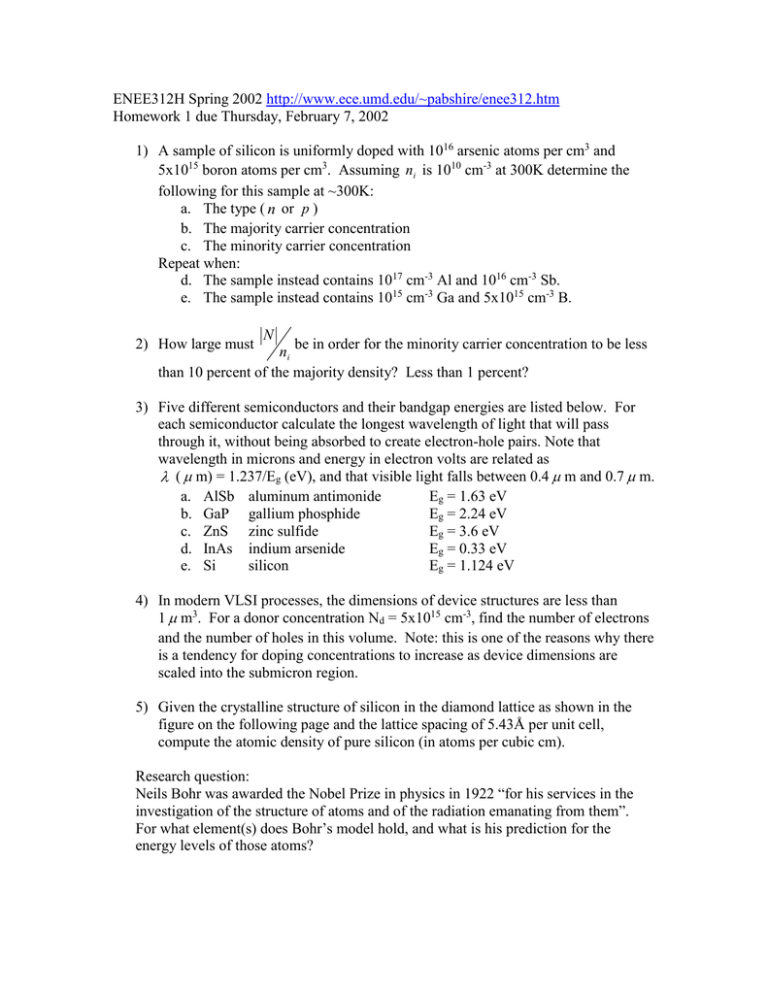
ENEE312H Spring 2002 http://www.ece.umd.edu/~pabshire/enee312.htm Homework 1 due Thursday, February 7, 2002 1) A sample of silicon is uniformly doped with 1016 arsenic atoms per cm3 and 5x1015 boron atoms per cm3. Assuming ni is 1010 cm-3 at 300K determine the following for this sample at ~300K: a. The type ( n or p ) b. The majority carrier concentration c. The minority carrier concentration Repeat when: d. The sample instead contains 1017 cm-3 Al and 1016 cm-3 Sb. e. The sample instead contains 1015 cm-3 Ga and 5x1015 cm-3 B. 2) How large must N be in order for the minority carrier concentration to be less ni than 10 percent of the majority density? Less than 1 percent? 3) Five different semiconductors and their bandgap energies are listed below. For each semiconductor calculate the longest wavelength of light that will pass through it, without being absorbed to create electron-hole pairs. Note that wavelength in microns and energy in electron volts are related as ( m) = 1.237/Eg (eV), and that visible light falls between 0.4 m and 0.7 m. a. AlSb aluminum antimonide Eg = 1.63 eV b. GaP gallium phosphide Eg = 2.24 eV c. ZnS zinc sulfide Eg = 3.6 eV d. InAs indium arsenide Eg = 0.33 eV e. Si silicon Eg = 1.124 eV 4) In modern VLSI processes, the dimensions of device structures are less than 1 m3. For a donor concentration Nd = 5x1015 cm-3, find the number of electrons and the number of holes in this volume. Note: this is one of the reasons why there is a tendency for doping concentrations to increase as device dimensions are scaled into the submicron region. 5) Given the crystalline structure of silicon in the diamond lattice as shown in the figure on the following page and the lattice spacing of 5.43Å per unit cell, compute the atomic density of pure silicon (in atoms per cubic cm). Research question: Neils Bohr was awarded the Nobel Prize in physics in 1922 “for his services in the investigation of the structure of atoms and of the radiation emanating from them”. For what element(s) does Bohr’s model hold, and what is his prediction for the energy levels of those atoms? adapted from Microelectronics: an integrated approach, Howe/Sodini, 1997.
